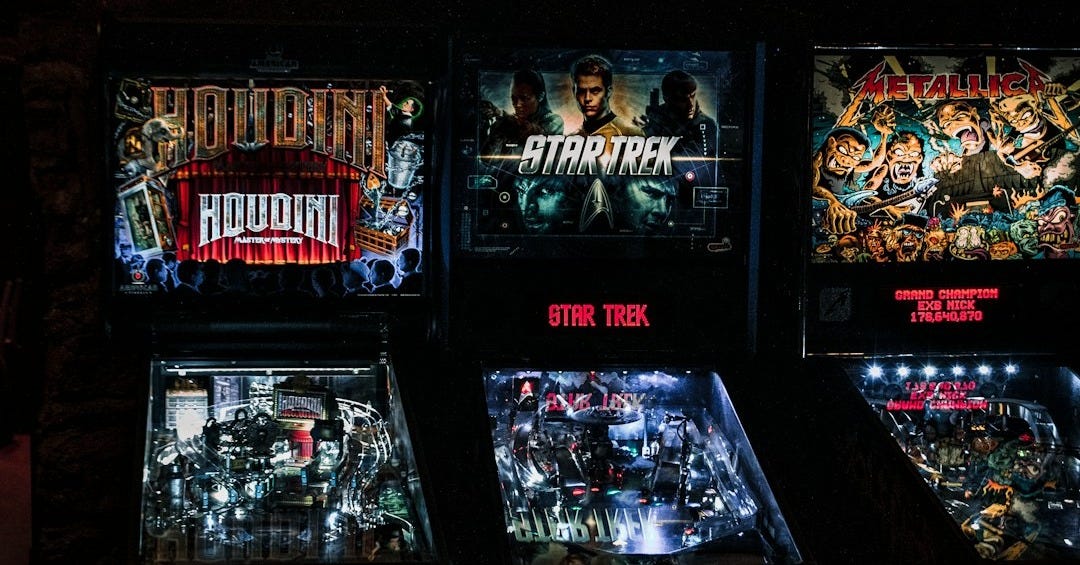CinemaCon Epilogue: Why The Most Important Lesson For Theaters Came From... The Pinball Hall of Fame
Multiplexes must spend time and money convincing audiences that going to the movies is a worthwhile activity beyond temporary exclusivity windows for periodic must-see event films.
If you’ve known me for any length of time, you’re probably sick of hearing or reading the “movie theaters become video game arcades” monologue. The condensed version is that multiplexes have been dealing with a perfect storm of factors (affordable home theater set-ups, streaming platforms with monthly costs on par with a movie ticket, a prestige TV/streaming boom that can now approximate 85% of what theatrical cinema can provide, etc.) that – even before the pandemic – caused the commercial bottom to fall out for the “just a movie” releases. The analogy was that of video game arcades, which went from $27 billion in annual revenue in 1982 to $5 billion in 1997 as at-home video game consoles began to approximate and then exceed most coin-op cabinets.
Even amid a leveling out to over/under $3 billion a year, arcades (be they stand-alone or part of existing plazas, multiplexes, or resorts) are now mostly dominated not by conventional video games but by “immersive” shooting, driving, and VR experiences. Even as this decade’s biggest franchise flicks like Top Gun: Maverick *and* breakout sleepers like Longlegs have comparatively overperformed, the industry is still in peril as moviegoers have prioritized the stereotypically Imax-worthy tentpole/event movie and de-prioritized (if not written off) everything else. However, perhaps the most educational moment during my week-long trip to Las Vegas for the annual CinemaCon conference was not one of the studio panels, first-look trailers, or celebrity appearances. It was my Thursday night outing to the Pinball Hall of Fame.





